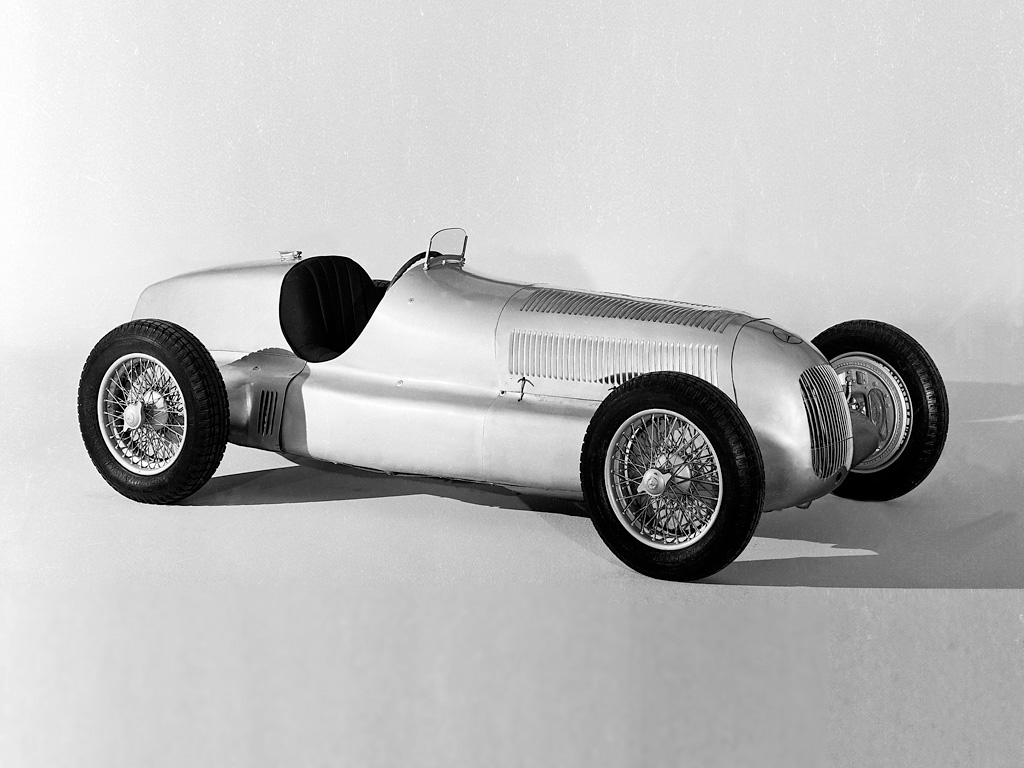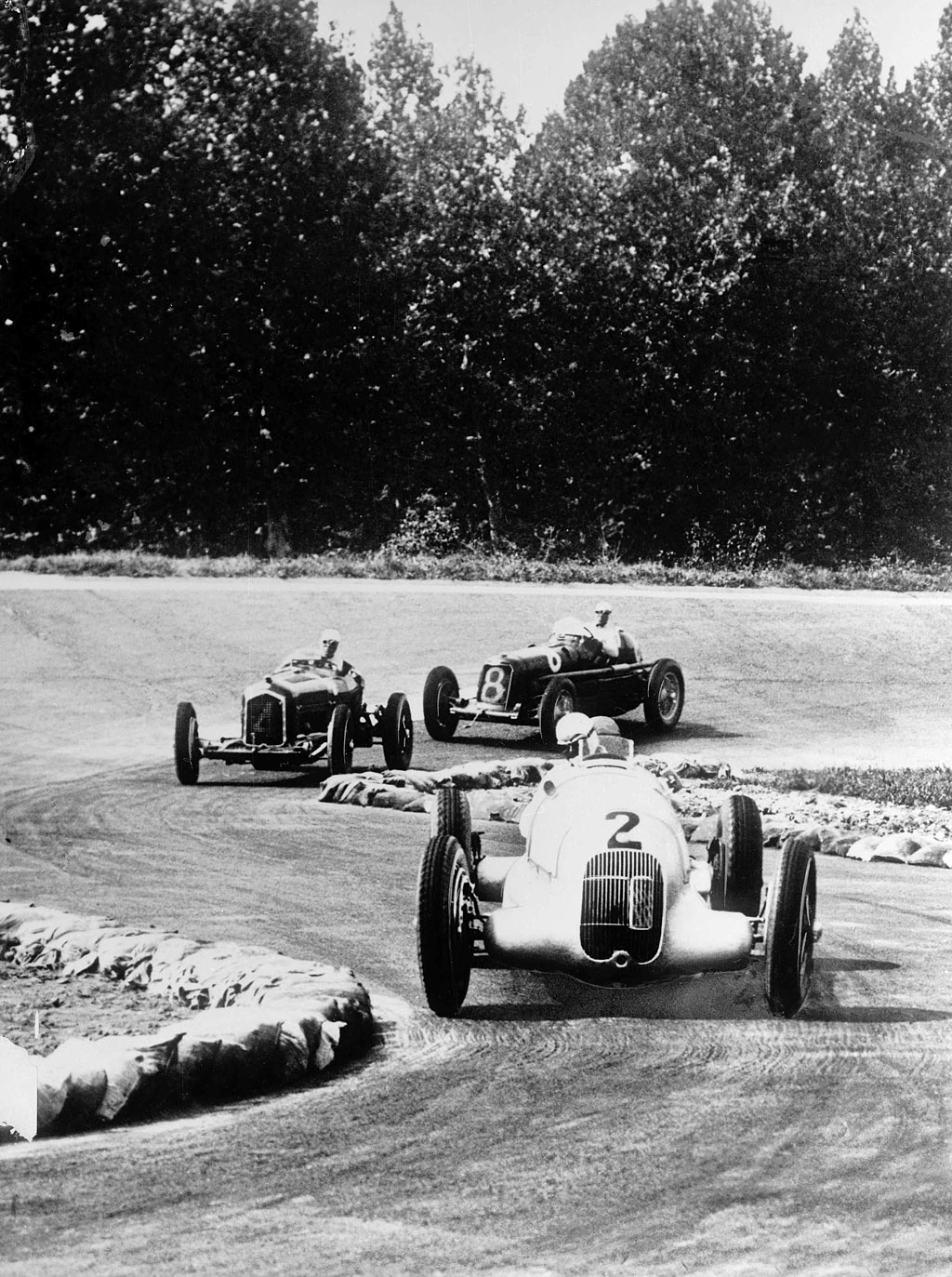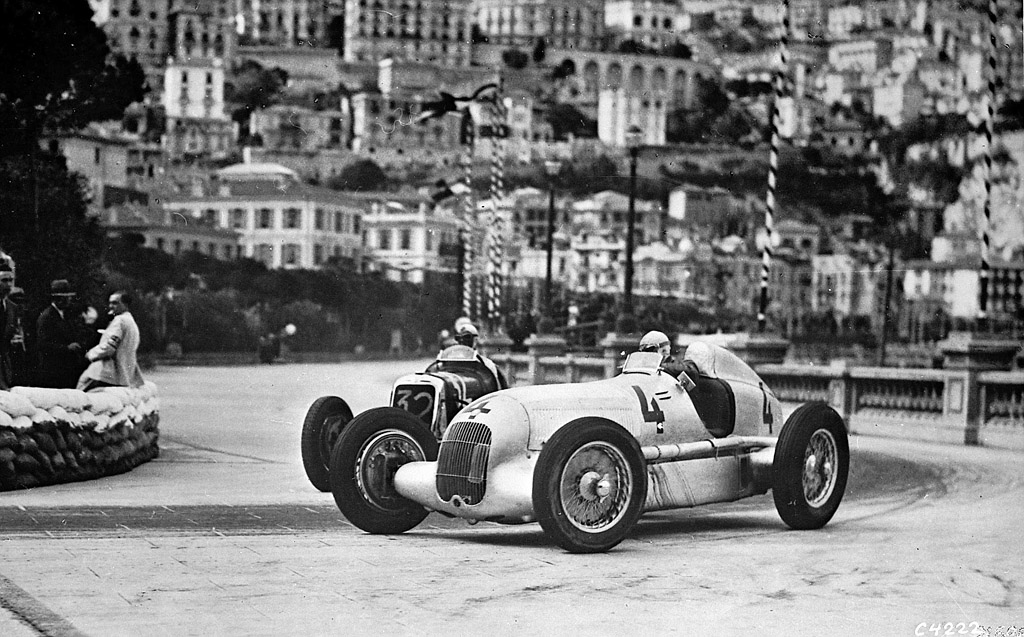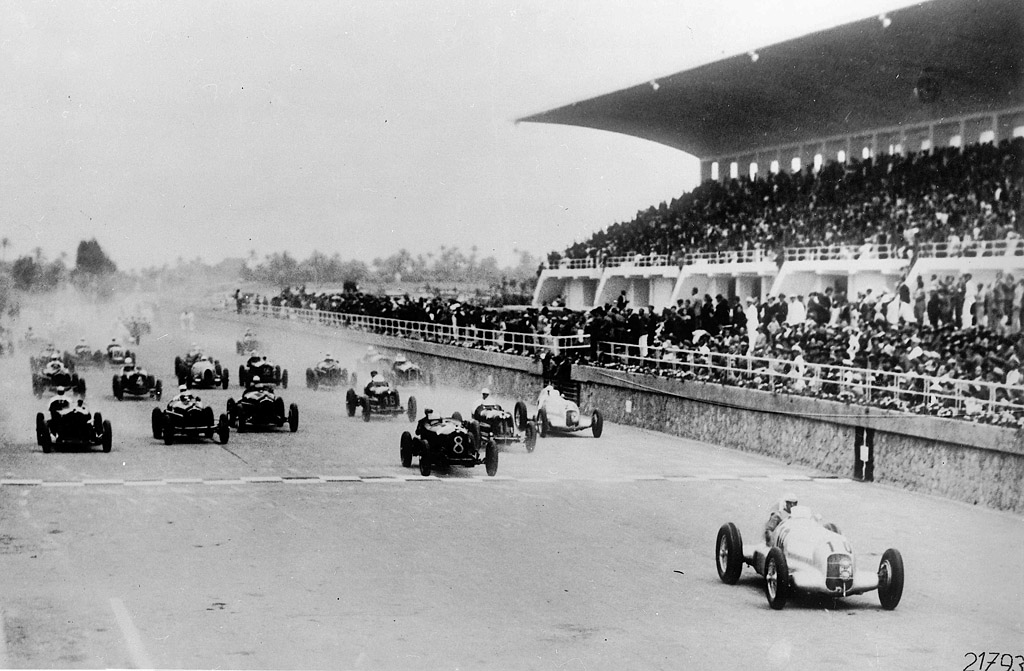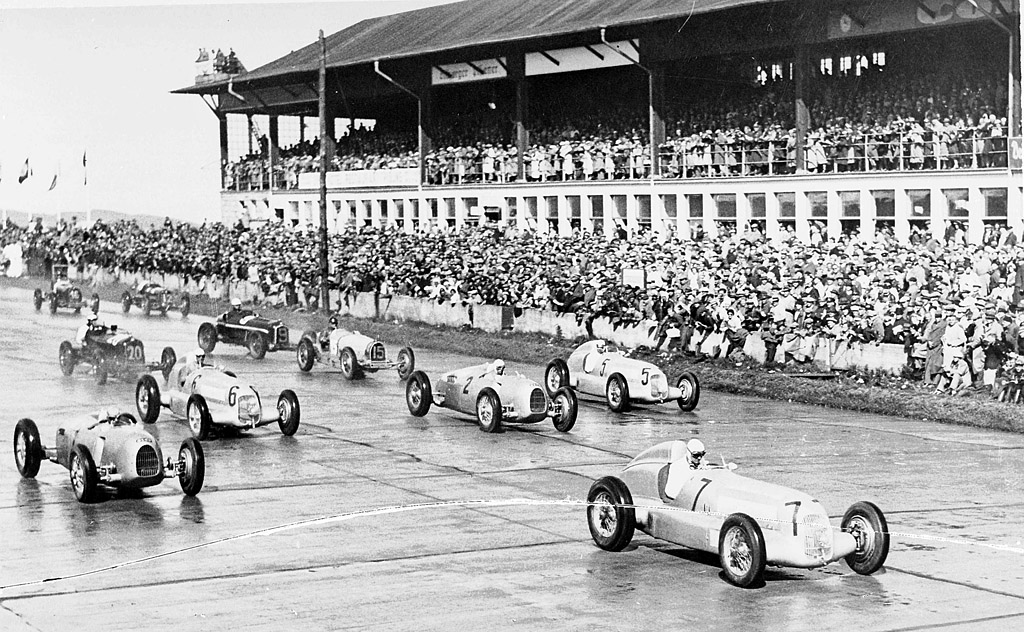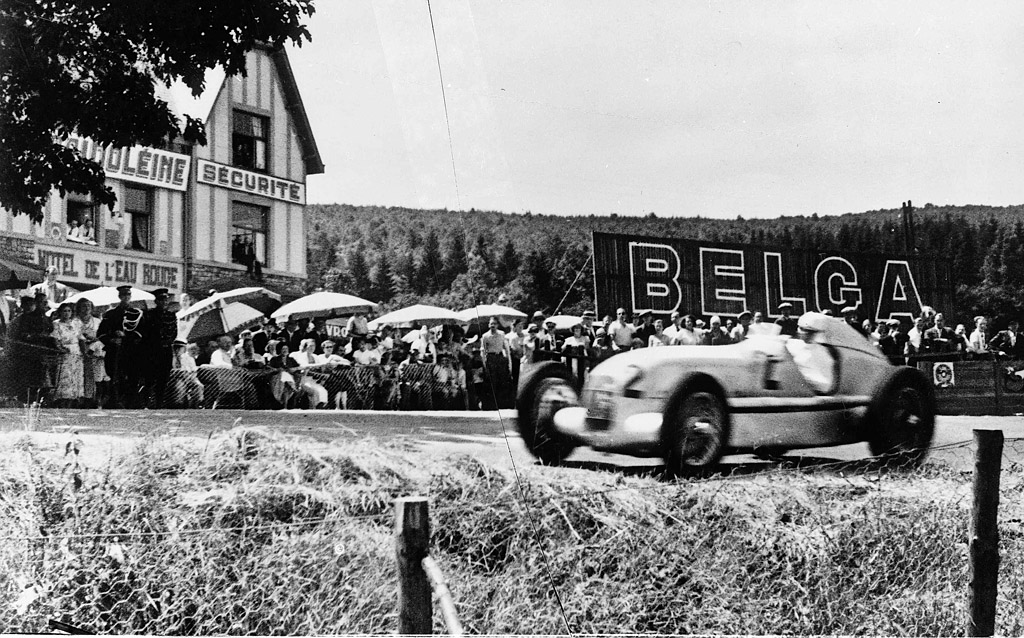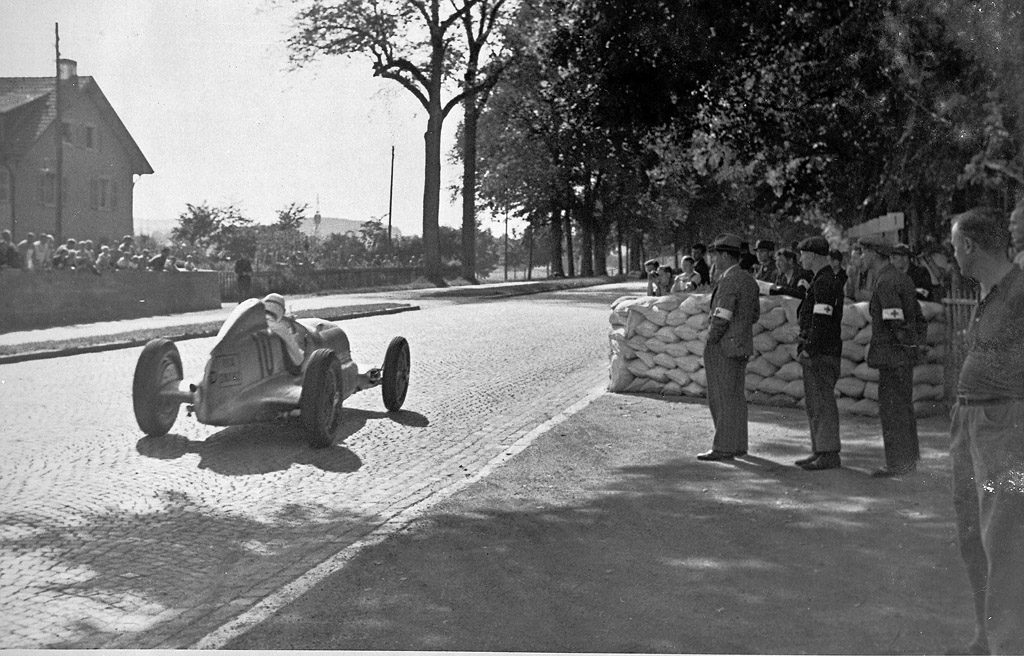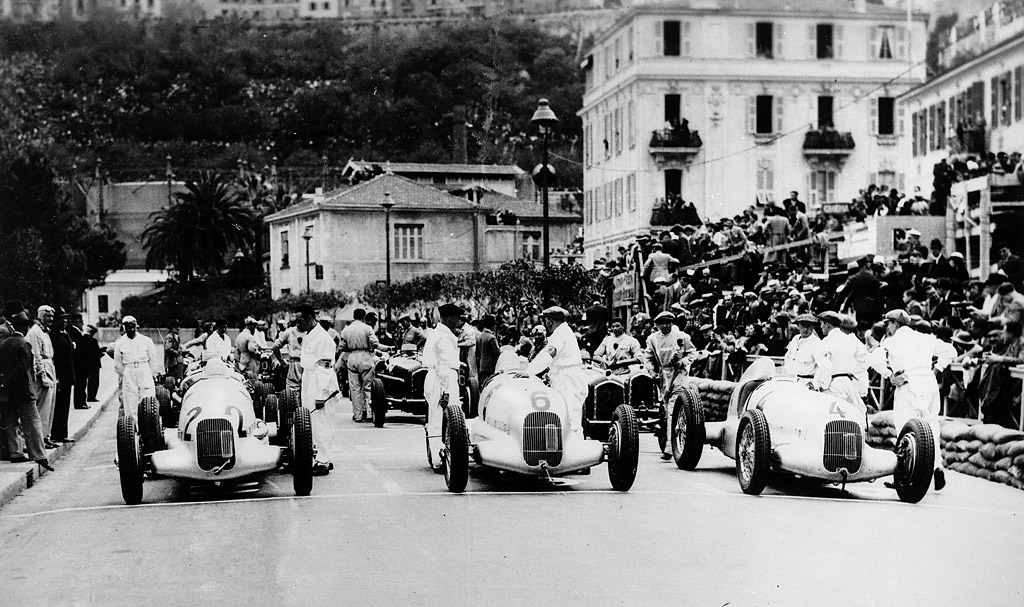1934 Mercedes-Benz W25
In its first race the W 25 was one kilogramme over the weight limit. Race manager Neubauer ordered the paint to be sanded off – the first silver arrow was born. The career of the Mercedes-Benz W25 was brilliant, with 16 victories in Grand Prix and other major races to its.
In early 1934 the German government gave huge amounts of funding to Mercedes-Benz and Auto Union for development of their racing teams. Within 10 months, Mercedes-Benz, under the direction of Dr. Hans Nibel, completed their first version of the racecar, the W25.
The car stood out as being very unique for the period as it had hydraulically operated brakes to work with the independent front and rear suspensions. The suspension setup warranted the need for hydraulic brakes, as the required linkage would be too complicated for mechanical drums.
The W25´s body was streamlined. To save on weight holes were drilled through almost all steel and aluminum sections. During the years of 1934 to 1936 the W25 featured many different engines. These powerplants were much alike and mostly varied by engine capacity. The engine list is as follows: M25A 3360cc 354HP, M25AB 3710cc 398HP, M25B 3990cc 430HP, M25C 4300cc 462HP & ME25 4740cc 494HP.
In Detail
The Mercedes-Benz SSKL, an extremely successful racing car in the 1920s and early 1930s, had served its purpose, driving from success to success. A new age dawned from 1934: the project for the future was the W 25. As to its premiere, Daimler-Benz set its sights on the Avus and Eifel races in the run-up to the French Grand Prix on July 1, 1934, the second of the season. To win the race in France would have been quite a feat, almost exactly 20 years after the one-two-three triumph of Daimler-Motoren-Gesellschaft (DMG) in Lyon. Eventually, it was an Alfa Romeo P3 Tipo B that actually won the race in Montlhéry, but it was the W 25 which represented the state of the art.
Hans Nibel was responsible for the entire project, Max Wagner for the chassis, Albert Heess and Otto Schilling for the engine. In the testing department under Fritz Nallinger, Georg Scheerer, one of the spiritual fathers of the early supercharged cars built by Daimler-Motoren-Gesellschaft (DMG), put the machines through their paces. Otto Weber assembled them, while the chassis were put together by Jakob Kraus, both men being veterans of the DMG excursion to Indianapolis in 1923. Strong stimuli came from a Daimler-Benz production car, the Mercedes-Benz 380, launched at the Berlin Motor Show in February 1933. This model set new standards with its independent wheel suspension, double wishbones at the front, a swing axle at the rear and an eight-cylinder in-line engine with integrated supercharger.
The racing engine, even from today’s perspective a highly modern four-valve unit with twin overhead camshafts, to which two blocks of four combustion units complete with cylinder head and coolant jackets were welded, tipped the scales at 211 kilograms. The transmission was flanged onto the differential (transaxle design) to improve the distribution of the axle loads. The supercharger was mounted at its front, providing two pressure carburettors with compressed air. The tank held 215 litres, 98 of which were emptied per 100 kilometres at racing speeds. The four gears and one reverse gear were actuated via a gate with a locking mechanism to the right of the driver’s seat.
The car’s frame was composed of two U-section side members with cross-bracing, all of which extensively pierced for lightness as on the SSKL. The body was hand-beaten aluminium, with a large number of cooling louvers. Aerodynamic fairings enclosed the front as well as the rear suspension, whereas a simple vertical-bar grille fronted the body with its strikingly tapered tail.
The race cars for 1934 were ready by the beginning of May. At dawn of the Thursday before the Avus race on 27 May, Manfred von Brauchitsch, Luigi Fagioli and Rudolf Caracciola took their seats behind the steering wheels of their W 25 cars. In spite of this successful test, the Mercedes-Benz management withdrew the three cars on the grounds that they were not ready for racing yet. Their debut would be a week later in the Eifel race where the Silver Arrow legend was born.
Ironically, the 750-kg formula had been created to curb the ever-escalating speed of the powerful racing cars – built for example by Alfa Romeo, Bugatti and Maserati. The very opposite was achieved since design engineers at once resorted to bigger displacements. The Mercedes-Benz technicians had envisaged 280 hp (206 kW) for the initial M 25 A, extrapolating the 85 hp (63 kW) per litre of the supercharged 1924 two-litre M 2 L 8 engine with which Rudolf Caracciola had won the 1926 German Grand Prix on the Avus, and arriving at a theoretical capacity of 3360 cc for the new engine. The actual output of the eight-cylinder engine at the beginning amounted to a massive 354 hp (260 kW). Several engine versions with boosted power output followed. The M 25 AB (3710 cc) variant generated 398 hp (293 kW), followed by the M 25 B (3980 cc and 430 hp/316 kW) and C (4300 cc and 462 hp/340 kW) variants, and eventually, in 1936, the ME 25 version (4740 cc) producing 494 hp (363 kW) – always at 5800 rpm.
In Detail
| tags | silver arrow, golden era |
| submitted by | Richard Owen |
| type | Racing Car |
| built at | Stuttgart, Germany |
| engine | M25A, All Steel, Inline-8 |
| position | Front Longitudinal |
| valvetrain | DOHC, 4 Valve per Cyl |
| displacement | 3360 cc / 205.0 in³ |
| bore | 78 mm / 3.07 in |
| stroke | 88 mm / 3.46 in |
| compression | 7.5:1 |
| power | 264.0 kw / 354 bhp @ 5800 rpm |
| specific output | 105.36 bhp per litre |
| bhp/weight | 417.95 bhp per tonne |
| redline | 5800 |
| body / frame | Aluminum over U-Section Pressed Steel Frame |
| front tires | 5.25×17 |
| rear tires | 5.25×19 |
| front brakes | Light -Alloy Drums w/Hydrualic Assist |
| rear brakes | Light -Alloy Drums w/Hydrualic Assist |
| steering | Worm & Nut |
| f suspension | Double Wishbones w/Coil Springs & Friction Dampers |
| r suspension | Swing Axle w/Transverse Quarter Ellptic Springs, Friction Dampers |
| curb weight | 847 kg / 1867 lbs |
| wheelbase | 2725 mm / 107.3 in |
| front track | 1473 mm / 58.0 in |
| rear track | 1412 mm / 55.6 in |
| length | 4040 mm / 159.1 in |
| width | 1770 mm / 69.7 in |
| height | 1160 mm / 45.7 in |
| transmission | 4-Speed Manual |
| gear ratios | 2.00:1, 1.37:1, 1.14:1, 1.00:1, 0.80:1 |
| final drive | 4.44:1 |
| top speed | ~300 kph / 186.4 mph |



